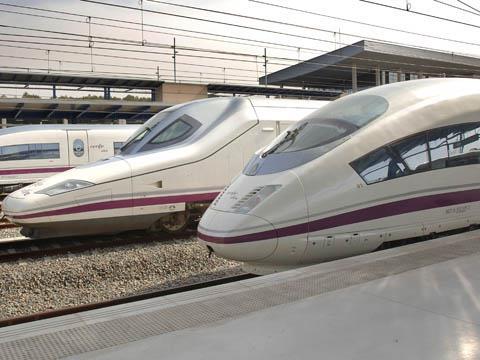
SPAIN: The European Commission has approved funding for further work on the high speed line linking Madrid with the Extremadura region and the Portuguese border, Commissioner for Regional Policy Corina Creţu announced on April 6.
The Madrid – Lisboa route has been designated as part of the TEN-T core network, forming a section of the Atlantic Corridor linking Lisboa and Madrid with Paris and Strasbourg. The section between Navalmoral de la Mata and Mérida has been deemed eligible for support from the European Structural & Investment Funds, paving the way for the European Regional Development Fund to contribute €205·1m towards the €312·1m cost.
According to the Commission, construction of a TSI-compliant double-track high speed line is expected to improve safety by eliminating level crossings along the current route. As well as improving connectivity between Madrid and Lisboa, the new route would increase capacity for both passenger and freight traffic.
Spanish high speed infrastructure manager ADIF Alta Velocidad is continuing work despite the decision to halt work on the Portuguese high speed line in favour of a single-track freight link. The existing route running west from Madrid to Navalmoral de la Mata is being upgraded, while the isolated Extremadura section between Plasencia, Cáceres and Mérida is reportedly expected to open as a single-track broad gauge line operated by diesel trains at a maximum of 200 km/h.
A Commission spokesperson told Railway Gazette on April 7 that ‘other sections of the line currently under construction or being planned will need to be approved separately, in order to receive finance from the EU. This finance will depend on the needs of the corridors, the member states and regions involved, and the availability of funds.’
In total, around €2·2bn of ESI funding has been allocated for transport and energy projects in Spain during the EU’s 2014-20 budget period. This is expected to support the construction of 475 km of new TEN-T lines and 524 km of other lines, plus the upgrading of 1 082 km of existing TEN-T corridors and 1 275 km of other routes.

















